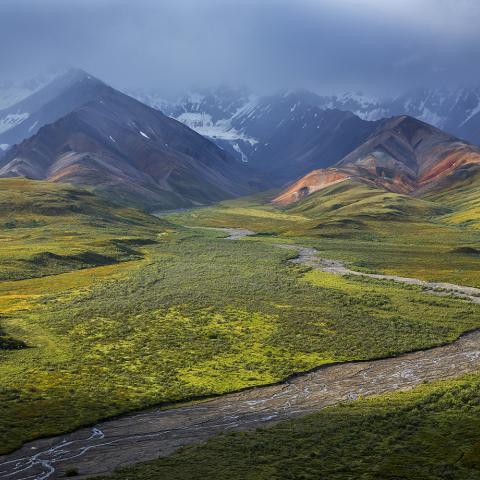What’s With All These Different Park Units, Anyway?

- By Rebecca Latson - August 4th, 2022 9:12am
Help power the National Parks Traveler’s coverage of national parks and protected areas.


When the colossal Ice Age floodwaters of Glacial Lake Missoula swept through Eastern Washington, the water gouged and eroded the land, pushing out soils and rocks and carving huge, wide channels known as coulees. Frenchman Coulee is one such channel measuring about 0.5 miles wide from wall to wall. This coulee is bounded on either side by almost vertical cliffs of mostly columnar basalts created from the Columbia River Basalt lava flows.

A National Natural Landmark, "the Drumheller Channels are the most spectacular example in the Columbia Plateau of basalt "butte-and-basin" channeled scablands. This is an erosional landscape characterized by hundreds of isolated, steep-sided hills surrounded by a braided network of (usually) dry stream channels. The landscape is the result of dramatic modification of the Columbia Plateau volcanic terrain by late Pleistocene catastrophic glacial outburst floods—the Missoula Floods.

"At the time of one of the first floods to be released from Glacial Lake Missoula, the Okanogan Lobe of the continental ice sheet had spread across the Columbia Valley and onto the Columbia Plateau to a position about 24 kilometers (14 miles) north of the site and so had caused the diversion of the glacial Columbia River into the former channel of Moses Coulee.

Dry Falls is a geological wonder of North America. Carved by the Ice Age Floods more than 13,000 years ago, the former waterfall was once four times the size of Niagara Falls. Today, the 400 foot-high, 3.5 mile-wide cliff overlooks a big sky and a landscape of deep gorges and dark, reflective lakes. The park is a notable site along the National Ice Age Floods Geologic Trail.





National Parks Traveler is a 501(c) (3) nonprofit.


Here’s the definitive guide to National Park System campgrounds where RVers can park their rigs.
Our app is packed with RVing- specific details on more than 250 campgrounds in more than 70 national parks.
You’ll also find stories about RVing in the parks, tips helpful if you’ve just recently become an RVer, and useful planning suggestions.
